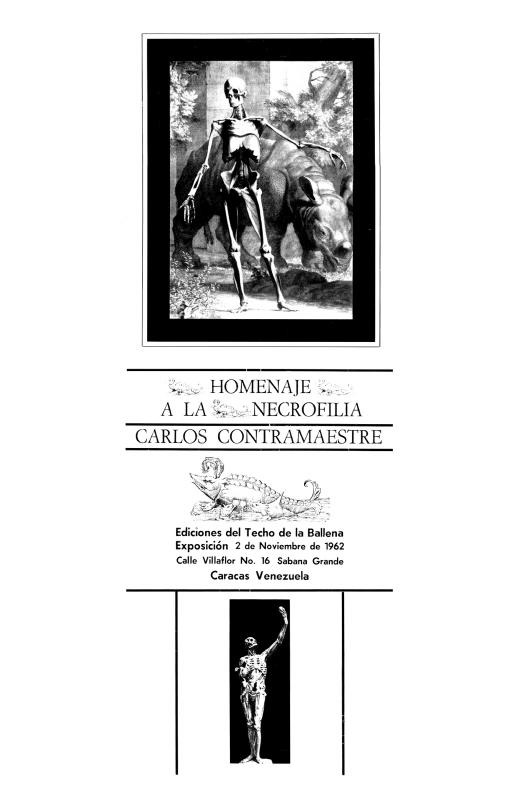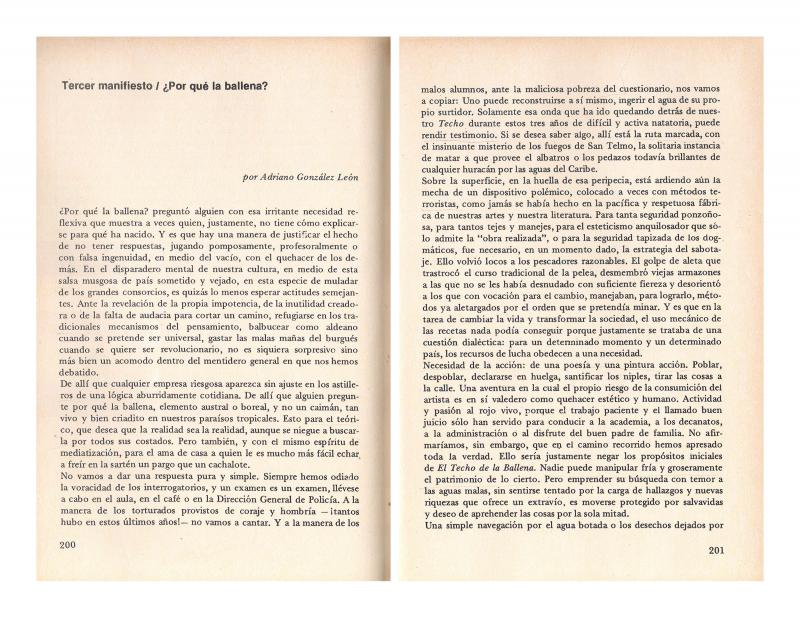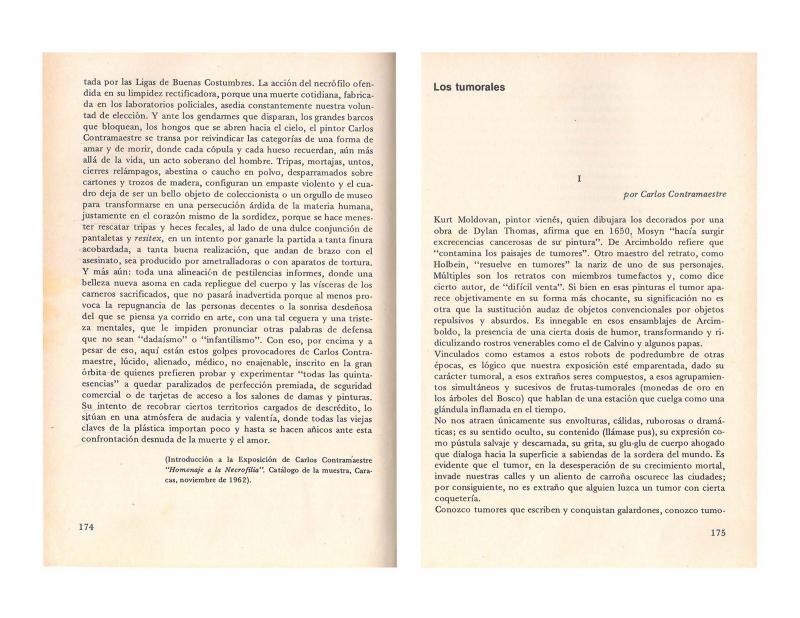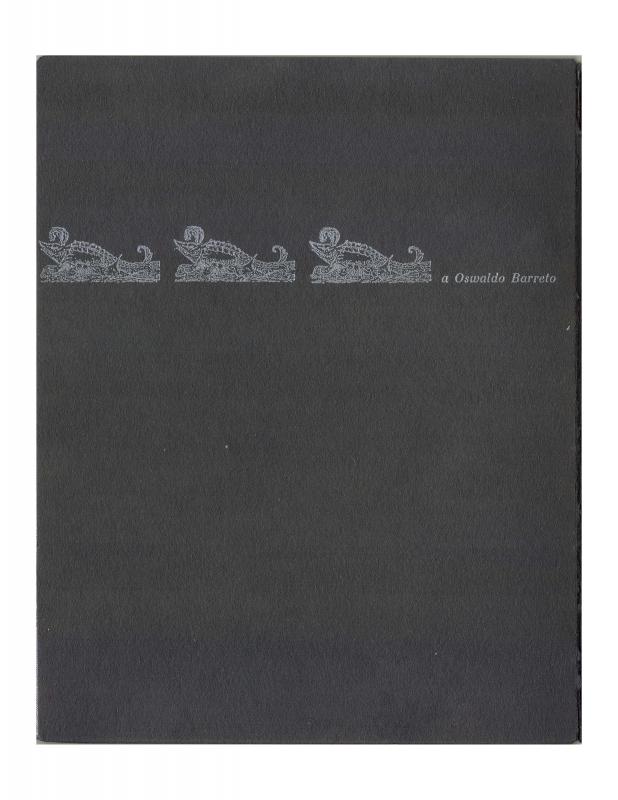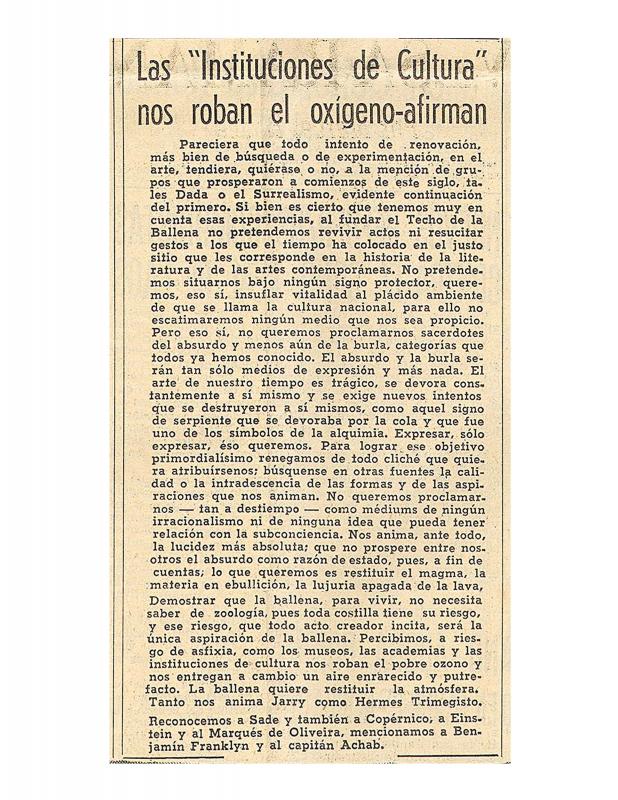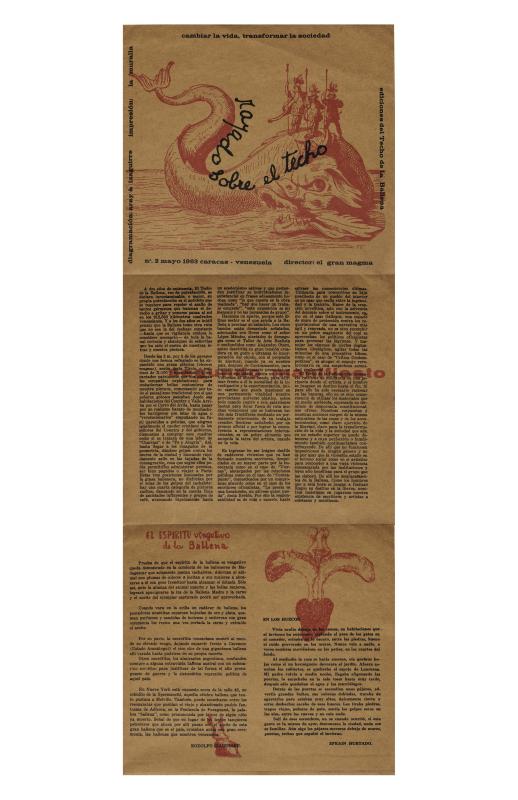El Techo de la Ballena was a group of visual artists and writers from the Venezuelan avant-garde who (from 1961 until 1968) combined a range of different disciplines—visual art, poetry, photography, film, and action art, among others—to create a revolutionary form of art that, in their opinion, challenged and contradicted every traditional socio-cultural value during the decade of greatest political violence that Venezuela had ever experienced. The group saw themselves as the artistic expression of that chaotic period, and viewed guerrilla warfare, intellectual leftist ideas, repression, and cities devastated by the forced and accelerated developmental model of the country’s nascent democracy during the presidency of Rómulo Betancourt (1959–64) as their frame of reference. The visual artists in the group embraced informalism as their aesthetic, to which they added a potent shot of aggressiveness to counter the values of geometric abstraction, traditional landscape painting, and even social realism, and adopted a strategy that was subversive, provocative, irrational, and surrealistic. The group produced numerous publications—including the three issues of the magazine Rayado sobre el Techo—and exhibitions. Members of the group included the Venezuelans Carlos Contramaestre, Juan Calzadilla, Caupolicán Ovalles, Edmundo Aray, Francisco Pérez Perdomo, Salvador Garmendia, Adriano González León, Fernando Irazábal, Daniel González, Gabriel Morera, Gonzalo Castellanos, and Perán Erminy, as well as artists from other countries who were living in Venezuela at the time, such as the Chilean Dámaso Ogaz and the Spaniards J. M. Cruxent, Ángel Luque, and Antonio Moya.
This “Segundo Manifiesto” was far clearer and more specific than the first one, and reflects the group’s cumulative experience since its founding in 1961. In that earlier version the members described and refined their objectives in support of their combative nature. At that time they had already sponsored a considerable number of provocative and subversive events, including Contramaestre’s exhibition Homenaje a la necrofilia (1962), which prompted an angry backlash from Caracas residents, and the publication of ¿Duerme usted, señor presidente?,the book by Ovalles and González León which led to the latter’s arrest and the former’s flight into exile. These activities were a reflection of their radical challenges to tradition—whether mocking vaunted glories or critiquing other avant-garde groups (including those on the left of the political spectrum)—that were inspired by their commitment to freedom and the urgent need to overhaul Venezuelan 1970s society. They invoked that sense of urgency as their justification for violence at an artistic level, which resonated, at a political level, with leftists who were unconditionally in favor of guerrilla insurrection in Venezuela.
[To read more articles written by members of the group El Techo de la Ballena, see in the ICAA digital archive by Adriano González León “Homenaje a la necrofilia” (doc. no. 1097543), his introduction to the works Carlos Contramaestre showed at the exhibition Homenaje a la necrofilia, 1962; also by Adriano González León “Tercer manifiesto: ¿Por qué la ballena?” (doc. no. 1097576); by Juan Calzadilla and Carlos Contramaestre “Los tumorales I y II” (doc. no. 1097559), in which they introduced Contramaestre’s exhibition Los Tumorales, in 1963; by Francisco Pérez Perdomo (untitled) “[Hay ciertos rostros de la ciudad…]” (doc. no. 1060288); and by Ángel Rama the prologue known as “Terrorismo en las artes” (doc. no. 1097527). See also, by El Techo de la Ballena (untitled) “[Establecer una frontera entre lo cursi y lo pavoso…]” (doc. no. 1059586); “Para la restitución del magma” (doc. no. 1060710); “Las ‘Instituciones de cultura’ nos roban el oxígeno, afirman” (doc. no. 1060199); and Rayado sobre el techo. Cambiar la vida, transformar la sociedad (doc. no. 1060254)].

